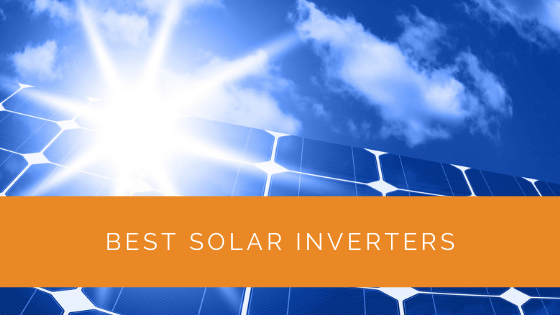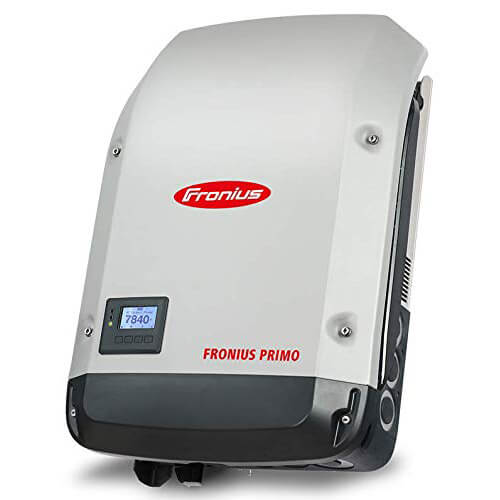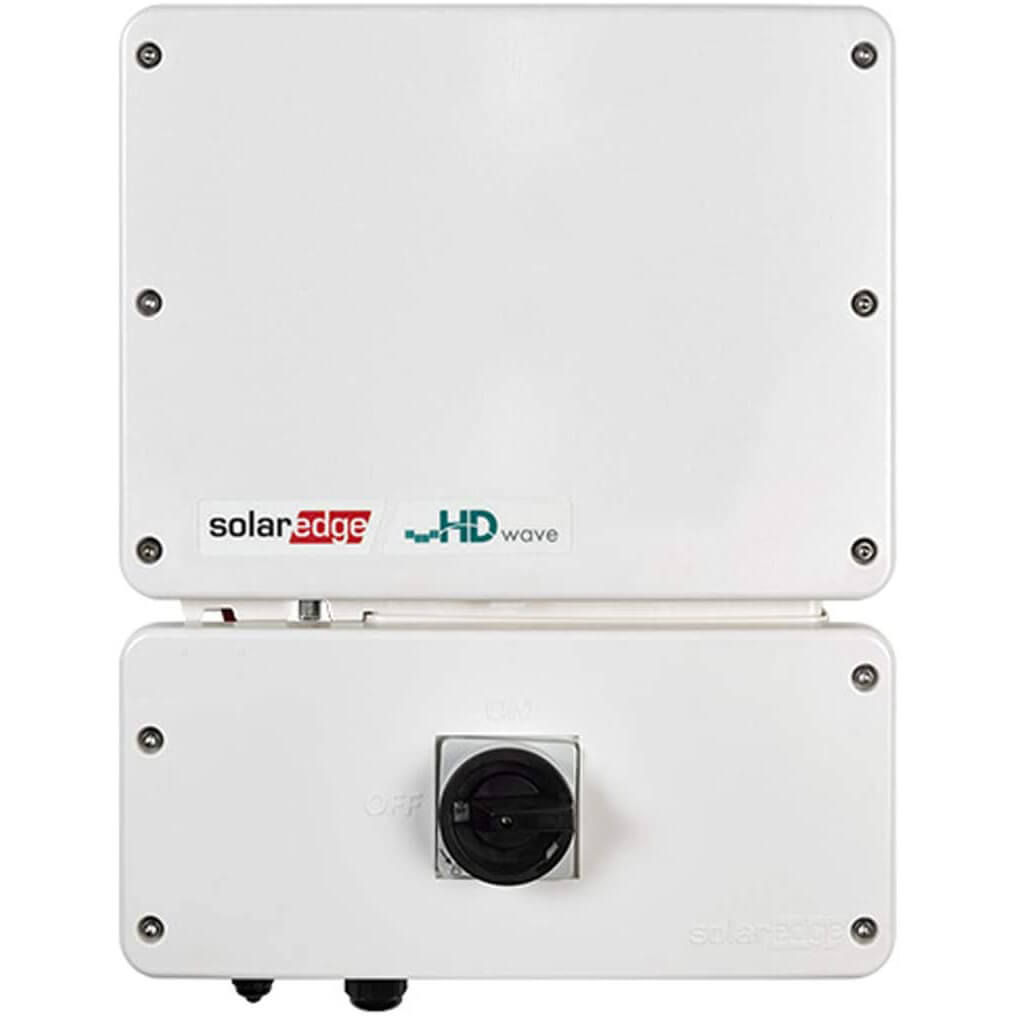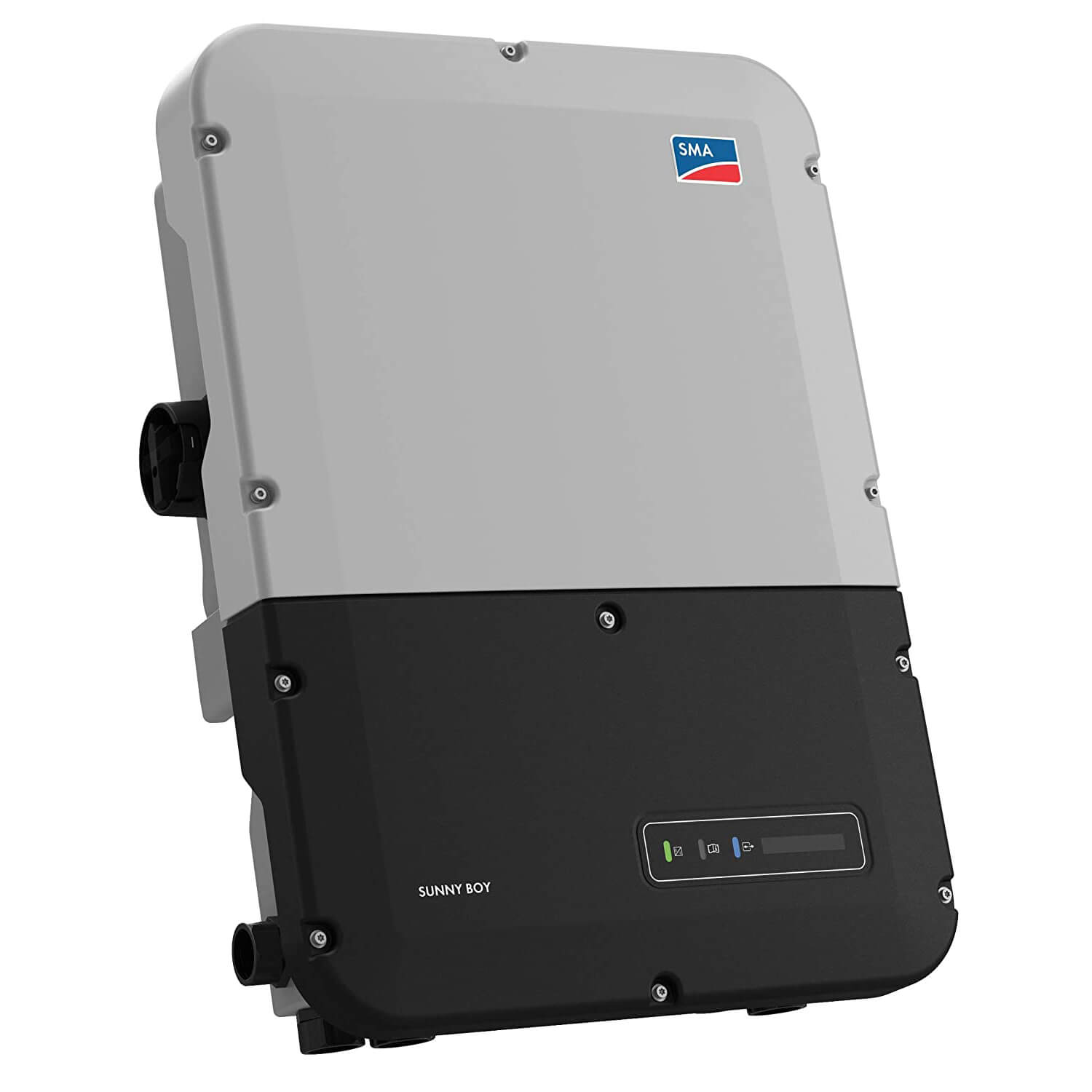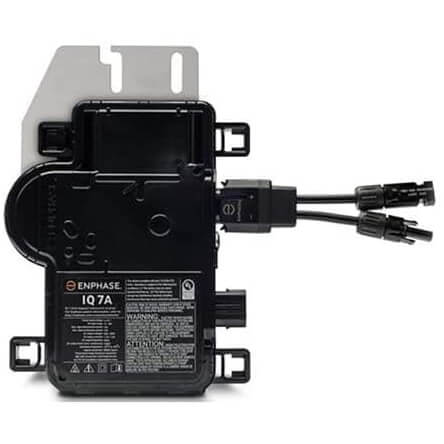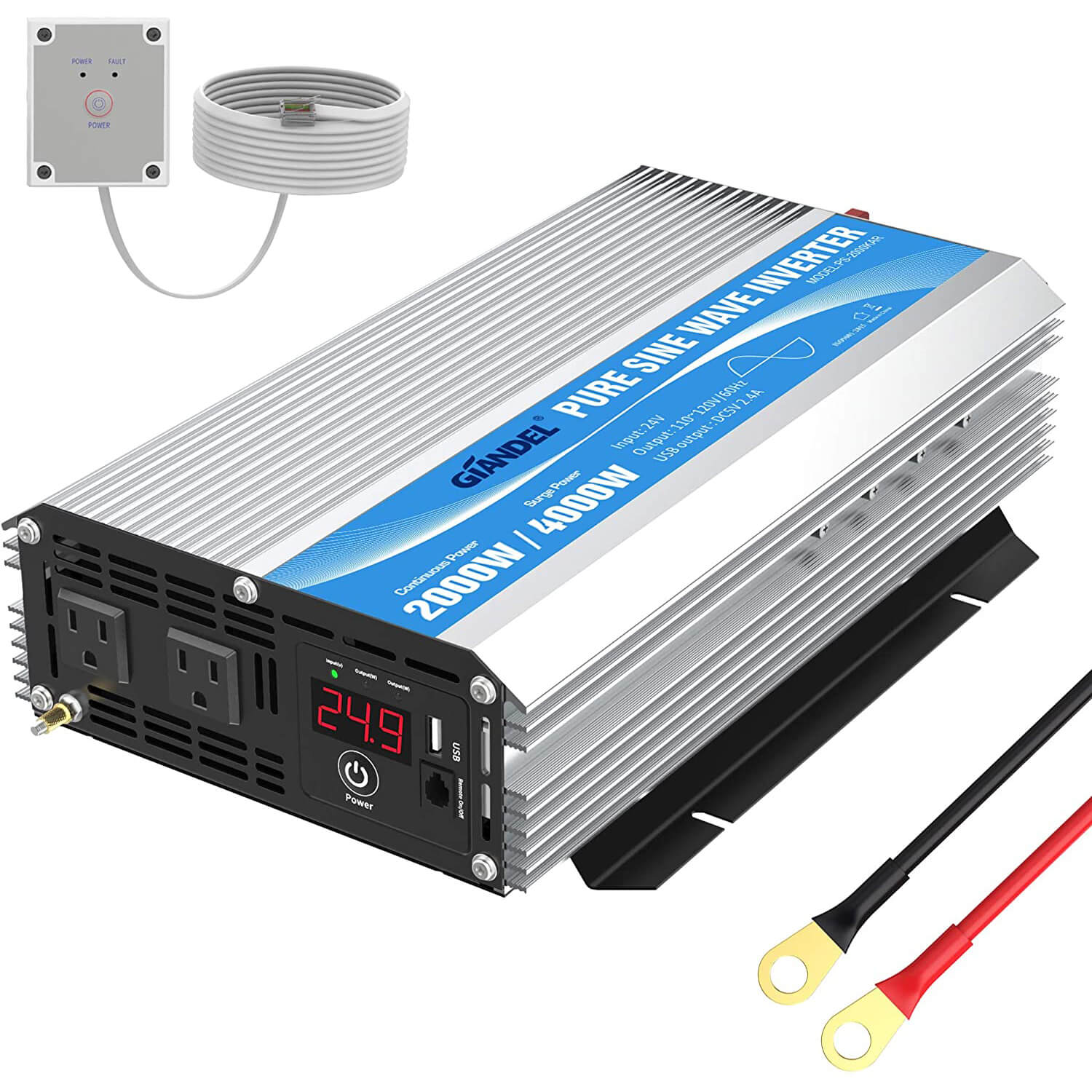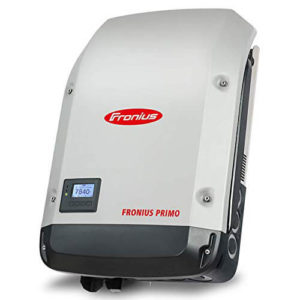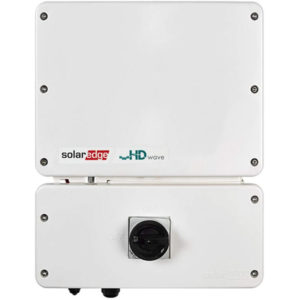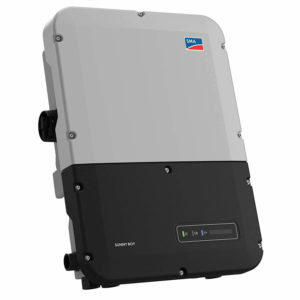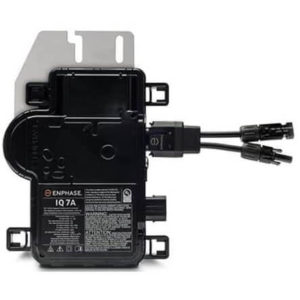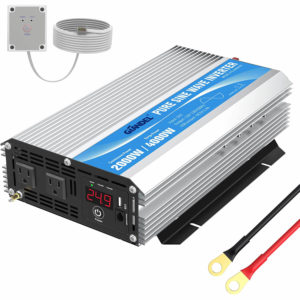Our blog is reader-supported. When you buy through links on our site, we may earn an affiliate commission. Thank you for your support!
A residential solar power system isn’t simply a blessing for the environment. No, it can also go a long way in saving your household quite a bit on bills! However, this won’t be possible unless you incorporate the best solar power inverter as part of your setup.
Solar inverters are handy pieces of hardware that convert DC energy into usable AC energy through your solar panels. This converted energy can then power multiple appliances, sometimes even entire homes! What’s more, you can always store the surplus energy for later!
If you’re ready to jump on the solar inverter bandwagon but don’t know where to start, worry not! This article will walk you through the market’s best solar inverters.
Also, it will give you a complete rundown of everything you need to know about solar inverters in general! So dive right in!
Read on for our expert reviews of the best solar inverters available. Check the latest prices to ensure you get a great deal!
Contents
- 1 Our Top Picks
- 2 5 Best Solar Inverters
- 3 Solar Inverter Buying Guide
- 4 Case Study: Enhancing Energy Independence with Solar Inverters
- 5 Expert Insights From Our Solar Panel Installers About the Best Solar Inverters
Our Top Picks
Image | Name | |
|---|---|---|
Fronius Primo Solar Inverter | ||
SolarEdge HD-Wave Inverter | ||
SMA Sunny Boy Inverter | ||
Enphase Micro-Inverter | ||
GIANDEL 2000W Power Inverter |
5 Best Solar Inverters
1. Fronius Primo Solar Inverter
The Fronius Primo’ SnapINverters’ have quickly gained a reputation as top-notch and extremely dependable residential string solar inverters. That is hardly a surprise, considering how easy it is to install, service, monitor, and even set up this inverter!
Features
Active Cooling System
This feature of the Fronius Primo solar inverter is perhaps its trademark. Fronius’s ‘active cooling’ system ensures the inverters perform to the best of their ability even when exposed to excessive heat. Active cooling helps mitigate the power when the inverter reaches its maximum operating temperature.
Easy Installation and Operation
The Fronius Primo solar inverter comes with an integrated DC isolator. As such, the inverter does not occupy too much space. It also features a unique snap-in design, which allows both easy installation and operation. In fact, you need not even detach it from the wall for it to operate efficiently.
Built-In WiFi and Remote Control
Fronius gives users the ability to monitor their inverter through built-in WiFi. Users can access the information through the solar web app on their smartphones. The included Fronius smart meter monitors the amount of electricity produced and regular self-consumption to boot.
Noise-Free
Fan speed and noise tend to increase alongside the inverter’s internal temperature. However, the level of noise generated by Fronius Primo is relatively lower, reaching a maximum of 65 dB(A). That said, when positioned outside windows, the noise of the inverter is a tad more noticeable.
Pros:
- It has a fan-forced active cooling system
- It can form an AC-coupled storage system when combined with a multi-mode battery inverter
- It has zero feed-in ability
- It comes with integrated data communication
- It has a WLAN technology-based communication system
- It has a high input current, featuring an 18A for each MPPT rating (5kW+SC version)
- It has an integrated DC insulator
- Its super-simple snap-in design ensures easy installation
Cons:
- It can be a tad noisy when positioned outside
2. SolarEdge HD-Wave Inverter
SolarEdge’s HD-Wave inverter has won the favor of many looking to go solar. In fact, thanks to its sleek design featuring DC optimizers, this inverter is nothing short of an icon. What’s more, the inverter seems to hit the 99% mark when it comes to efficiency!
Features
Power Optimization
This feature is perhaps the SolarEdge HD Wave’s main selling point. The inverter’s power optimizers allow it to measure and optimize the output per panel. As such, it will make adjustments to the panels as and when needed to ensure the system overall generates optimal levels of electricity.
Safety Measures
The SolarEdge HD-Wave is entirely compliant with the latest National Electric Code’s rapid shutdown requirements. This safety feature instantly suits down the inverter’s arrays in the case of a blackout. The HD-Wave inverter’s panels produce less than 1 volt of power until it is properly hooked up for safety.
Monitoring
The SolarEdge HD-Wave comes with a full-feature monitoring portal. As such, you can view as well as control your system and each individual panel’s production with relative ease. It also helps detect faults and alerts you about your system’s health.
Temperature Rating
The SolarEdge HD-Wave inverter features a temperature rating of -40°F / -40°C. This increased tolerance could prove extremely beneficial in areas where temperatures drop to below zero.
Pros:
- It offers lower heat dissipation since it is a single-phase inverter
- It can manage battery storage, system energy, and smart energy products
- It reduces heavy cooling elements as well as magnetics through the clean sine wave
- It comes with a variety of advanced safety features, such as integrated art fault protection
- It is much smaller and lighter due to DSP processing and distributed switching
Cons:
- It will not work without power optimizers
3. SMA Sunny Boy Inverter
The SMA Sunny Boy inverter is the perfect addition to homes and even smaller commercial properties. As long as you don’t need panel-level power optimization, this inverter should cover all your needs!
Features
Secure Power Supply
The SMA’s Secure Power Supply is one you won’t find in other inverters. This handy feature ensures you have a backup power source for whenever there is an emergency. Whenever there is a power outage, all you need to do is plug into the SPS. Within seconds, they will have a 2000-watt power source at their service.
Optional Optimizers
While the SMA Sunny Boy does come with optimizers, they are entirely optional. As such, you have complete flexibility over beginning with the base package and retrofitting the optimizers as and when you feel the need. Remember, though, that adding optimizers takes away the Sunny Boy inverter’s SPS functionality.
Improved Communications
The SMA Sunny Boy inverter now features a Cellular LTE modem kit — an alternative to the WLAN or Ethernet. Apart from that, you also get to indulge in an integrated DC disconnect for faster onsite logistics. As such, the process of installation becomes both quicker and simpler.
Versatility
The SMA Sunny Boy is one of the most enduring inverters in the market. That, combined with its 2,000-watt backup power supply, makes it one of the most versatile inverters too. Besides, features like improved shade mitigation technology and multiple independent MPPTs ensure optimal operation at all times.
Pros:
- It is a single-phase inverting offering up to 97% efficiency
- It does not include a transformer
- It is very compact and lightweight, weighing only around 16 kg
- It comes with dynamic feed-in control
- It alerts users and installers about anomalies or faults through a free monitoring system, “SMA Smart Connected”
Cons:
- It is a bit tricky to install since it doesn’t have a display
4. Enphase Micro-Inverter
Micro-inverters are slowly and steadily rising in popularity as excellent alternatives to ‘string’ solar inverters. And Enphase has established itself as quite the market leader with its own microinverter.
Here’s a peek at some of the amazing features of this inverter!
Features
System and Panel Level Monitoring
Micro-inverters come with the advantage of better system monitoring. After all, it allows for each panel to be monitored separately. So you can gauge the performance of the complete system. The system even sends out warnings when any one panel is underperforming, preventing system downtime.
Safety
The Enphase Micro Inverter converts DC power into AC like any other inverter. However, it does so immediately — while on the roof. That is crucial because typically, it is voltage from DC electricity that results in arcing, especially if cables are damaged. That, in turn, could lead to a potential fire, so the Enphase Micro-Inverter stops that from happening.
No String Sizing Requirements
With micro-inverters, you need not limit yourself to a certain number of panels in a group. As such, the panels are less impacted by shading. What’s more, they can also expand effortlessly.
60-cell and 72-cell Panel Compatibility
The average solar panel has 60 or 72 cells. However, the two actually don’t have any difference in cost-per-watt or performance. As such, having access to both while setting up your system is always nice. That’s exactly what the Enphase Micro-Inverter exactly offers!
Pros:
- It is compliant with smart inverter regulations and rapid shutdown codes
- It is super easy to install this inverter and check that everything is functioning well
- It comes with a 25-year warranty, indicating the product quality
- It is a lot more convenient for installing in challenging conditions
- It offers easy system expansion
Cons:
- It does not come with a monitor, adding labor to the installation process
5. GIANDEL 2000W Power Inverter
The GIANDEL Power inverter is ideal for someone on a budget who still wants a powerful inverter. This handy inverter is safe to install and maintain, thanks to its input and output spots being isolated. However, it is a tad less powerful than other solar inverters.
Features
Efficiency
The GIANDEL Power inverter could deliver an efficiency rating between 94-96% in optimal conditions. This rating is based on the power derived from the inverter’s batteries.
Battery Charger Output
This inverter comes with a battery charger and a 2-feet long battery cable like most off-grid inverters. Typically, you can use these to recharge the batteries in freezing, wintry months via a backup generator. The range of the battery charger falls somewhere between 50-100 amps DC.
Temperature
Quite naturally, inverters are sensitive when exposed to intense heat. For this reason, the GIANDEL Power inverter’s built-in cooling fan automatically starts working when the temperature hits 104-degrees Fahrenheit. That way, the device remains cool even when placed in a garage or any other place under extreme heat.
Pros:
- It is created by a reliable, well-known brand
- It is quite budget-friendly
- The inverter comes with a ton of helpful features
- It is backed by a 1-year warranty
- The product’s finish is very nice and firm
- It also includes a quality user manual and comes with customer service support
Cons:
- It does not come with a remote switch
- The inverters AC outlets are a tad loose
Solar Inverter Buying Guide
Did you find our exclusive takes on the 5 best solar inverters helpful? Well, they were chosen after careful consideration by a team of experts, so they’re bound to be the top ones out there!
However, there are still a few factors you may want to factor in to make the perfect choice for you. So here’s our comprehensive solar inverter buying guide to help you make the right choice!
Key Takeaways
- A solar inverter is a device that converts DC electricity generated by solar panels into AC electricity, which is used to power most household appliances and devices.
- Solar inverters can ensure an uninterrupted power supply to your home by connecting to the grid. They can even feed excess power into the grid, allowing net energy credits.
- Benefits of using a solar inverter include the ability to monitor system output, maximize energy production, communicate with the utility grid, and detect faults for improved system maintenance and safety.
What is a Solar Inverter?
Essentially, a solar inverter is a device that converts electricity in direct current (DC) into alternating current (AC) through solar panels. This conversion is of utmost necessity. After all, nearly all lighting, appliances, and electronics run on the alternating current.
When the solar photovoltaic system is hit by sunlight, it causes the electrons within the cell to move around in the solar panel. This movement then generates direct current, which is collected by the solar panel circuits. However, this isn’t what most homes need.
So here’s where solar inverters step up. The electric energy produced within the solar panel cells tends to flow into the solar inverter. Here, the DC is converted into AC, which various lighting and appliances can then use.
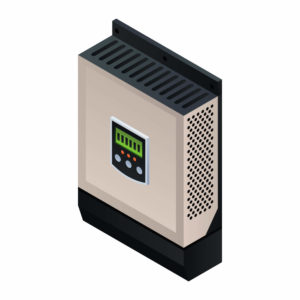
How Does a Solar Inverter Work?
The way a solar inverter works is pretty straightforward. The device converts DC energy to AC power since that’s what most appliances need to function. However, that’s not all a solar inverter does.
If your solar-powered home is linked to the grid, your inverter will act as a middleman. It will be the device connecting your home to the electric grid. As such, it goes by the moniker “grid-tie inverter.” This handy device ensures your home’s power is never interrupted, regardless of how much energy your solar panel actually produces.
So what happens when your solar power system generates more electricity than your home needs? Well, the photovoltaic inverter will feed the excess power back to the grid. What about when the power produced is less than what your home requires? The inverter combines both solar power and grid power!
Similarly, your home may need to run entirely on energy from the grid at night. After all, the solar panels will not be generating any electricity. Or, it could combine grid power and energy from solar batteries.
Regardless, a grid-tie inverter’s primary purpose is to ensure your home has power at all times. Also, it makes sure you don’t feel a difference as the source of power switches from one to the other.
What are the Benefits of a Solar Inverter?
Naturally, if it’s your first time investing in a solar inverter, you will be a tad skeptical. For that reason, we’ve compiled a list of the wonderful benefits of relying on a solar inverter! Take a peek down below!
Monitor System Output
Solar power systems are capable of producing thousands of watts on days when the sun is really shining. Quite naturally, then, a lot of homeowners would like to measure the performance of their unit. After all, it is an investment.
Well, solar inverters make doing so super easy! They almost always offer a way to check the energy being produced currently. What’s more, some even allow doing so through mobile apps or websites!
Some are even advanced enough to send out alerts when things aren’t working efficiently, or component issues are detected. Not to mention, performance tracking is an excellent way to keep tabs on your system’s components yourself.
Essentially, tracking ensures that every component of your device is generating the right amount of electricity.
Maximize Energy Production
Solar inverters tend to monitor solar array voltage so that solar panels operate at maximum power. That way, the electricity produced will always be as clean as possible.
Now let’s talk about sine waves — a measure of the smoothness in direction changes of currents. Typically, grid-tied home solar inverters produce a purer sine-wave than low-cost ones, producing a modified sine wave. As such, the former is far more efficient and smooth, making it suitable for sensitive appliances.
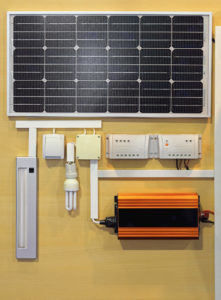
Utility Grid Communication
Solar inverters can prevent the transmission of electricity from your solar panels to external power lines during blackouts. In doing so, they keep line workers analyzing or fixing the grid out of harm’s way.
Inverters also measure whether your solar battery bank is full and whether your home needs all the produced solar energy. If the electricity becomes surplus, the inverter will feed it into the grid, nabbing you some net energy credits.
Fault Detection
It is quite natural for electrical wiring and solar equipment to age or degrade. However, these can turn into hazardous electrical faults, such as arcs or ground faults, even more so if you fail to keep up their maintenance.
The benefit of solar inverters, though, is that they can detect issues and shut down. As such, they protect not only themselves but the system as a whole. Some might even alert you to get a bit of servicing done to prevent further damage.
Installation Process for Solar Inverters
Truth be told, installing a solar inverter is a pretty tricky process. As such, it is best to leave the task to trained professionals who know what they’re doing. However, if you feel you’re up to it, here’s how you can go about installing your new inverter:
Location
The first step to successfully installing a solar inverter is choosing a proper location. In fact, the location of your inverter is so important that it influences its lifespan.
The best location for installing your inverter will be clean and cool. After all, an inverter is a power electronic appliance, and power electronics perform best when not degrading in hot sunlight. Also, shade ensures that inverter components last as long as possible.
Ensure your inverter has a NEMA 4X rating. Only with this rating will your solar inverter be capable of withstanding harsh conditions, especially if you cannot find a shady, convenient location.
Position
Similarly, an inverter’s position is also critical. Ease of access should be a priority when installing an inverter. After all, it will make repairs and servicing that much easier.
Also, you want to take care to leave enough setback space for ventilation and code reasons. That is besides other clearances for code mandate setbacks, gas meters, and vents.
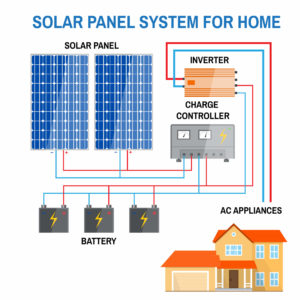
Wiring and Mounting
The right type of wiring and mount can help you be more cost-effective when installing a solar inverter. It is best to keep it simple, clean, and well-organized.
Some inverters tend to have incredibly tricky wiring access and compartments. Not only that, but they may make attaching lugs and ground bushing extremely complex too.
That is why you should always opt for well-designed inverters. These will typically come with attachment points for zip ties as well as service loops to ensure clean wire management.
Complex Communications
Inverters typically use multiple communications platforms, which makes installing them even more difficult. Not only that, but these platforms also make commissioning and connecting data communications trickier.
Earlier, you needed an IT professional with a laptop to hook up your inverter to the internet. However, the process is a lot simpler now, thanks to WiFi and smartphone apps.
Among the many third-party hardware available, SunSpec Modbus reigns supreme for commercial communications. It provides a super-simple wire and plug-and-play integration as well provisioning.
Code and Product Knowledge
Knowing the product well can also go a long way in simplifying installation. Inverters that are lightweight and ergonomic are quite naturally the easiest to install. Some are also super-easy to commission, thanks to their product line having the same displays and interface. As such, they also let you easily pre-configure the inverter depending on typical usage.
In fact, you might only need to turn on the inverter and run a basic test of AC and DC. Also, with constant evolution and NEC code changes in the solar industry, keeping track of the latest requirements is helpful.
Types of Solar Inverters
Switching to a solar inverter isn’t always as simple as picking one you like. Solar companies often base their choice of solar inverter on a combination of various factors. Here are some of the key factors that help in making this choice:
- The complexity of the roof
- The frequency and extent of shade on the roof
- The purpose behind your solar power usage
- Your residential area’s utility guidelines
- The manufactures they contract with, and more
Based on these factors, you could end up with one of the following types of inverters:
String Inverters
Stronger inverters are most commonly found in commercial and residential settings. Essentially, this inverter treats several panels as one massive unit. However, they do come with a drawback — any fault in one panel will be reflected throughout the string.
That said, these are the cheapest types of inverters. For that reason, they continue to grow in popularity.
Microinverters
Microinverters are typically installed near the solar panel itself. These inverters come with the benefit of permitting each individual panel to work separately. Not only that, but microinverters offer the quickest and safest installation to boot.
Some solar panel manufacturers install microinverters within the panel. However, bear in mind that these are the costliest of inverters. Also, they need quite a bit of upkeep.
Power Optimizer
Power optimizers are essentially a mix of microinverters and string inverters. The energy from the panels in a power optimizer flows to a central inverter, much like string inverters. However, the difference is the inverters are positioned near individual panels like microinverters.
Before transmitting power to string inverters, power optimizers work to optimize electricity voltage. By maximizing output per panel, they minimize the impact of shading on any single panel.
Hybrid Inverter
Hybrid inverters are the latest innovation among solar energy inverters. Essentially, these are a mix of a PV inverter with a battery inverter. They are available in both straight string and optimized string configurations.
Hybrid inverters offer one primary advantage — they convert electricity both ways. So not only do they convert DC electricity to AC power but also AC electricity to DC power. That way, they can power your home as well as charge solar batteries, electric vehicles, and more!
Features to Look for in a Solar Inverter
With increasing awareness about the harmfulness of carbon emissions, several people are jumping on board the solar inverter trend. The problem, though, is that most don’t know what features make a quality solar inverter.
A top-notch solar inverter will inevitably enhance user experience while also providing adequate power from the solar system. Keeping that in mind, it is important to analyze a solar inverter’s features and specifications thoroughly before making a purchase.
Here are some features, in particular, to consider when looking for the best solar inverter:
Durability
Solar systems can have life spans of up to 20 years. As such, an inverter being durable and enduring is pretty much non-negotiable. Bear in mind that high-quality products always use long-lasting materials in their construction. Not to mention, they also feature a premium design.
Safety
Anti-island protection is a must when it comes to solar inverters. This feature instantly disconnects the solar system’s electrical supply from the grid in case of a power outage. Essentially, anti-island protection keeps people within your home and electricians working on faults safe from potential electric shocks.
Solar Panel and Inverter Compatibility
Only if the solar panels and inverter in your system are compatible will they work together efficiently. Remember that inverters typically come with a voltage range. It is within this range that they control a variety of panels and maximum input current.
So if you’ve already picked the panels you want, make sure the inverter you opt for operates well within them. If you’re unsure, you can ask your solar installer for advice on the compatibility of the different panel and inverter configurations.
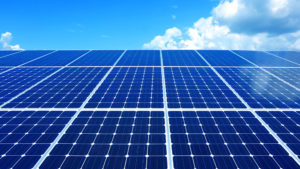
Life Expectancy and Warranty
A solar inverter typically lasts around ten years on average. As such, the warranty being offered with any standard inverter should cover at least those ten years.
One that comes with an even longer warranty period is even better. After all, it indicates the manufacturer’s confidence in the quality and life expectancy of the product.
Also, don’t forget to peruse the warranty document carefully before signing it. For instance, ensure the document details the process for actioning your warranty. It should also clearly state what counts as the company’s responsibility and what counts as yours.
A quality warranty will hold the company responsible for the cost of removing, transporting, replacing, and reinstalling a faulty inverter during the warranty period. If a company isn’t willing to commit on this front, it indicates a lack of confidence in their product.
Extra Features and Functionalities
Inverters sometimes pack in additional functionalities and features that may or may not be necessary. For instance, hybrid inverters can usually connect to battery storage and stock up on the system’s excess energy. Similarly, micro-inverters can optimize single solar panels.
So before making a purchase, ensure an inverter has the functionalities you need for the optimal working of your system.
Service and Support
With inverters lasting up to ten years, a warranty shouldn’t be your only concern. Another critical aspect to consider is after-sales service. Yes, a quality inverter comes with an after-sales service that is both reliable and trustworthy. That way, you don’t need to navigate difficulties yourself!
Price
Now, this point might perhaps be the most important to you when narrowing down on the best solar inverter. Before selecting a product, take some time to study market prices and different product features. You can always find such information online or in the local market.
Customer Reviews
Most inverters sold on the internet will have some amount of customer reviews or feedback. So you should always look out for these when analyzing a particular product.
Bear in mind that fewer reviews do not always indicate a defective solar inverter. Nevertheless, it is best to settle for something with more reviews, especially positive ones.
Also, make sure that the reviews you’re checking are the newest ones. Older ones may not have any details on the latest technology changes or newer features of the product. As such, they lose their validity.
Case Study: Enhancing Energy Independence with Solar Inverters
Background
At Solar Panels Network USA, we strive to empower our clients with sustainable energy solutions. Our recent project involved a small business owner who wanted to integrate solar energy into their operations to reduce energy costs and environmental impact.
Project Overview
The business owner required a solar inverter that could efficiently manage their energy needs, offer high reliability, and ensure safety. We recommended a combination of advanced solar inverters known for their power optimization, durability, and user-friendly features.
Implementation
We began by assessing the business’s energy consumption patterns, including peak usage times and overall energy requirements. Based on this assessment, we provided solar inverters with power optimization and advanced cooling systems, ensuring efficient energy conversion and consistent performance.
Our installation team conducted a thorough site survey to determine the optimal placement of the inverters for maximum efficiency. We installed the inverters, ensuring all components were securely mounted and properly connected. Additionally, we integrated a monitoring system to track the inverters’ performance and energy output.
Results
The business owner reported a significant reduction in energy costs, noting the reliable and efficient performance of the solar inverters. They were particularly impressed with the advanced optimization features that allowed for maximum energy production even during partial shading. The safety features provided added peace of mind, ensuring compliance with regulations and protection during power outages.
Summary
This project highlights the effectiveness of integrating high-quality solar inverters into commercial energy systems. By understanding the business’s needs and providing tailored solutions, Solar Panels Network USA demonstrated how advanced solar technology can enhance energy independence and sustainability. Our commitment to using top-tier products and providing expert guidance ensures that our clients can enjoy reliable, eco-friendly power solutions for years to come.
Expert Insights From Our Solar Panel Installers About the Best Solar Inverters
As a professional solar installer, I’ve seen the importance of having an efficient cooling system in solar inverters. It ensures optimal performance even in high temperatures, preventing any potential drop in energy conversion.
Senior Solar Installer
Power optimization in solar inverters is crucial for maximizing energy production. Inverters with advanced optimization features can adjust output per panel, ensuring consistent energy supply and better overall system efficiency.
Lead Solar Technician
Safety features in solar inverters, such as rapid shutdown capabilities, are essential for both user safety and compliance with regulations. These features prevent potential hazards during power outages and maintenance.
Solar Installation Expert
Our Expertise in Solar Products
At Solar Panels Network USA, we are more than just enthusiasts; we are dedicated researchers and users of solar inverters. With our extensive experience, we have stayed at the forefront of solar technology, gaining a deep understanding of the intricacies of various solar inverters. Our team has hands-on experience with a wide range of inverters, witnessing the evolution of these essential components from their inception to the advanced versions available today.
Why Trust Our Reviews?
- Hands-On Testing: Before delivering any review, our team invests weeks rigorously testing the featured solar inverters. For this article, we installed and utilized each of these inverters in diverse settings, from residential rooftops to commercial installations. This ensures that we comprehensively evaluate their performance in real-world scenarios.
- Continuous Learning: We regularly hold solar technology conferences, workshops, and seminars. This ongoing learning process ensures that we are always up-to-date with the latest developments in solar technology, enabling us to assess products against the most recent industry standards.
- Feedback Loop: Over the years, we have cultivated a vibrant community of solar enthusiasts. We frequently reach out to them for feedback on products, ensuring that our reviews are not solely based on our perspective but also reflect the broader community’s experiences.
- Transparency: When we receive products for review from manufacturers, we maintain complete transparency with our readers. For this article, some inverters were purchased by our team, while others were provided by manufacturers. However, our reviews remain unbiased, with a focus solely on the performance and reliability of the products.
- Decades of Experience: Collectively, our team boasts over two decades of experience in the solar industry. Our expertise encompasses a broad spectrum, from understanding the technical intricacies of solar inverters to evaluating their aesthetic design and functionality.
In this article, we have harnessed our collective knowledge, technical expertise, and community feedback to provide you with comprehensive reviews of the best solar inverters for 2025. We firmly believe that our unwavering commitment to transparency, continuous learning, and extensive industry experience positions us as a trusted source for solar inverter reviews.
Conclusion
Whether you’re just getting started with your solar system or nearly done building it, including a solar inverter is non-negotiable. After all, these nifty devices let you save on cash, reduce your carbon footprint, and power your appliances all at once!
With this list, you can now have a good starting point to find a solar inverter that best matches your needs! So waste no time, and start your search right away.
About the Author
Solar Panels Network USA stands at the forefront of solar energy solutions, driven by a team of seasoned solar engineers and energy consultants. With over decades of experience in delivering high-quality solar installations and maintenance, we are committed to promoting sustainable energy through customer-centric, tailored solutions. Our articles reflect this commitment, crafted collaboratively by experts to provide accurate, up-to-date insights into solar technology, ensuring our readers are well-informed and empowered in their solar energy decisions.

